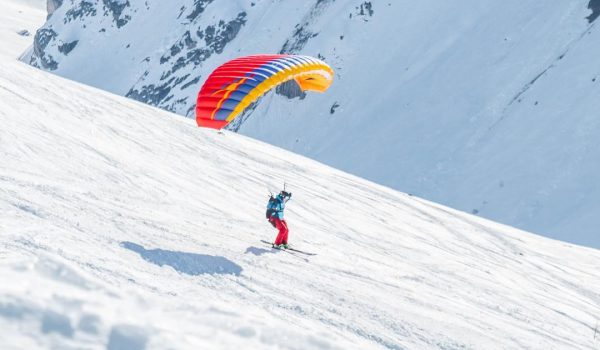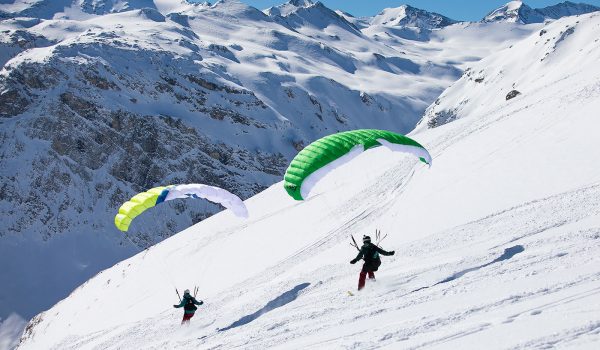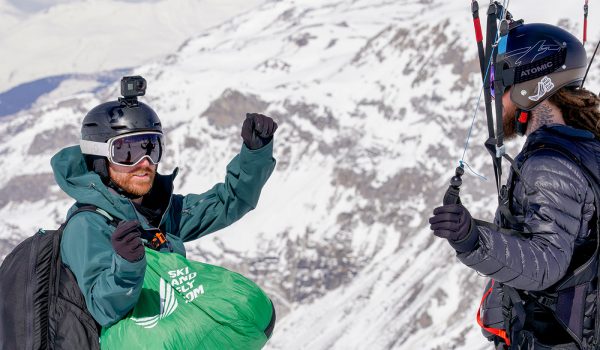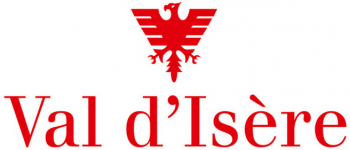Speed Riding is probably the most exciting winter sport. It is the amazing combination of Skiing and Flying and literally adds another dimension to your skiing without compromising anything you love about skiing. Get in touch with us if you would like to Learn Speed Riding in France or NZ this winter.


But what does it take to get started?
You do not need to be a Freeride Pro or an active member of the Austrian Ski National Team. However, the better you ski the easier your progression will be in the sport. A level three skier accordingly to french standards or basically being able to do parallel turns on red and black runs and a reasonable off-piste experience is definitely a great advantage.
Skiandfly’s Speed Riding Academy
Offers a variety of courses including “Learn to Speed Ride”, specialty workshops clinics and regular classes suitable for riders of all levels. We are the organizer of the “Speed Riding Progression Weeks” program; A 6 day fast track workshop suitable for Speed Riders of all levels and a 5 day Entry Level camp suitable for beginners. Please check for available dates in Val d’Isère during Jan, Feb, March and April on our designated website Speed Riding France.


SKIANDFLY’s Speed Riding Academy
offers a variety of courses, specialty workshops and clinics suitable for riders of all levels. We are also the organizer of the World’s largest annual Speed Riding event in Val d’Isere, France “Speed Riding World Meet”

As pioneers of the sport, we have been teaching Speed Riding for more than seven years and our course curriculums are based on our experience and knowledge gained in the sport over many years. Our experienced and highly qualified team of instructors will always guide you through a solid and safe progression in this exciting sport.


TRAINING FOCUS
General introduction to theoretical and practical basics of Speed Riding. Suitable for intermediate and advanced skiers and the required foundation to advance to level II and level III.
TRAINING OBJECTIVES
- Correct risk assessment of weather forecast,
- Ability to read current and local weather conditions
- Select suitable terrain for ability
- Correct equipment check and setup
- Controlled handling of skiing with wing above. Riders needs to demonstrate controlled handling during launch, rides, flights and landings/controlled stopping in designated area.
- First rides (stay on the ground) with maximum runs of 200-300m length.
- Demonstrate wing control through turns, maintaining inflation while avoiding take off.
- Emergency training to safely demonstrate ability to take off and fly back with the gradient of the slope and maintain control.
- Maximum height 15m, length of jumps 10 – 25m.
ENTRY COURSE CRITERIA
- Good skier who can confidently ski red/black runs
- Reasonable off-piste experience is definitely a great advantage
- No air sports license or experience required;
- No snowboard, telemark, big foot etc permitted
WHAT WILL YOU LEARN
- Skiing under a Speed Riding canopy
- Flying a Speed Riding canopy
- Kiting a Speed Riding canopy
- Alpine and high mountain flight safety
- Low and High wind launch technique
- Basic flight manoeuvres
- Basic and advanced riding manoeuvres (Wing energy management)
- Basic and Advanced launch techniques
- Small wing dynamics
- Proximity flying basics + safety
- Speed riding wing theory + coaching
- Instruction from licensed instructors
- Video flight analysis
- Speed Riding Equipment
- Ski-, Snow- and Flying mountaineering knowledge and preparations
- Emergency procedures
NUMBER OF SPEED RIDES/FLIGHTS REQUIRED TO PASS COURSE LVL 1
- Minimum of 30 rides/flights to display the complete Level I course content
TRAINING FOCUS
Speed Riding exercises on the snow and in the air with a greater distance to ground/slope, familiarize the student with the wing during different flight maneuvers; safety-conscious behavior during flying and emergency procedures and training during flying, landing approaches and landings.
TRAINING OBJECTIVES
- Controlled and safe handling of the speed riding equipment during launch,
- Different flight maneuvers and knowledge of differences between a parachute, para-glider, speed riding and speed flying wing.
- Knowledge and demonstration of active control during emergency situations in the air (turbulence, etc) and angle of attack.
- Knowledge of hazards/risks and code of conduct.
- Independent self assessment of terrain and weather (basics).
- Not authorized to conduct solo/independent Speed Riding. Only authorised to Speed Ride with a certified ISSF instructor.
- First flights of max. 200-300m length and max. 100m in height; student is not authorized to conduct solo/independent Speed Riding.
- Only authorised to Speed Ride with a certified ISSF instructor.
COURSE CRITERIA TO ENTER LEVEL 2
Successful Level 1 participants and/or individuals with a valid Skydiving and/or Paragliding license, minimum of 100 jumps/50 hours of flights over the last 12 months in combination with Speed Riding/
Flying experience of minimum of 30 runs. Ability to ski black runs confidently. Qualifications assessed by an certified instructor.
COURSE CONTENT | THEORETICAL
- Safety: Self-check; equipment settings and code of conduct; detailed flight planning,
- Equipment: Comparison of Speed Riding Wing, Speed Flying Wing, versus mini-wing, para glider, parachute; in detail fabric/material and available trim systems.
- Aerodynamics: Comparison of Speed Riding Wing, Speed Flying Wing versus mini-wing, para glider, parachute: forward speed, dynamics, glide angle, trim settings.
- Flight manoeuvres: demonstrating different takeoff and landing techniques; demonstrating different methods of steering + controlling the gliding angle; various flight maneuvers
- Emergency procedures: Malfunctions during takeoff and flight, including termination procedures (terrain, slopes, forest, etc.), precautions, avoiding obstacle techniques (target fixation, brake usage), escape/outs.
- Terrain and weather: Joint terrain and weather assessment.
COURSE CONTENT | PRACTICAL
- Safety: Assessment of the terrain and local weather; planning of a Speed Riding day.
- Launch Technique II: With headwind (max 25km/h) and wind from the back/ side wind (max 15km/h.)
- Launch preparations: Detailed flight planning; pre-flight checks; trim settings.
- Wing control (maneuver): Target landings, change of direction (+ 90° turn), braked turns.
- Wing control (methods): Turn initiation with toggles and weight shift, rear risers turns.
- Emergency procedures: Abort launch (decision line); simulated emergency situations (eg line-over at launch)
NUMBER OF SPEED RIDES/FLIGHTS REQUIRED TO PASS COURSE LVL 2
Minimum of 40 rides/flights
TRAINING FOCUS
Speed Riding exercises in proximity to the slope/ground; advanced wing control while riding different terrains; developing a flying style and testing different trim settings; decision guidelines for solo/independent Speed Riding; Passing the Proximity Mountain Speed Rider Certificate.
TRAINING OBJECTIVES
- Demonstrating controlled handling of Speed Riding equipment during dynamic maneuvers on a slope ( proximity/contour flights including and touch-and-go/ski-and-fly);
- Profound assessment of all safety-relevant parameters (ea. terrain, weather, wind, mental and physical condition of pilot);
- Knowledge of emergency and rescue procedures for alpine terrain.
- Discussion about group dynamics
- Authorization to Speed Ride solo/independent/unassisted and in small groups.
COURSE CRITERIA TO ENTER LEVEL 3
Successful Course Level 2 participants with a flying record not dating back more than 6 months.
COURSE CONTENT | THEORETICAL
- Safety: Demonstrating confident decision making, anticipatory riding/flying; riding/flying in groups.
- Aerodynamics: Energy dynamics of a Speed Riding and Speed Flying Wing (anticipatory riding/flying).
- Flight: Gliding angle control; terrain anticipation and energy balance; variety of riding maneuvers.
- Emergency procedures: Avalanches/assessment/equipment; equipment damage; accident and injury assessment; rescue procedures.
- Terrain and weather: Assessment criteria (especially designed for Speed Riders leading to confident decision-making.
- Legal: International country and ski-field related Speed Riding regulations and requirements, country specific right of way rules, etc.
COURSE CONTENT | PRACTICAL
- Launch technique III (kite start): Kite launching technique (side ways) in strong winds (up to 40km/h.)
- Wing control (maneuver): Quick change of direction; Slalom style; Touch-and-go; Kiting.
- Wing control (methods): Steering control via toggle when skiing, back riser and weight shifting.
- Emergency procedures: Emergency landings to reset and after simulated hazardous situations.
- Flying in a group: flight path planning, rights of way, landing approach, hazards (ea. collision, burbles) and group dynamics.
NUMBER OF SPEED RIDES/FLIGHTS REQUIRED TO PASS COURSE LVL 3
Minimum of 30 rides/flights
TRAINING FOCUS
Speed Riding in the back-country (open high-alpine terrain); terrain assessment; Hazards/risks and emergency procedures including rescue procedures in the outback; barrel-roll training, Open Mountain License
TRAINING OBJECTIVES
- Confident and accurate assessment of terrain and weather;
- Autonomous planning of the flight path.
- Risk assessment.
- Anticipatory flying.
- Demonstrating a profound knowledge of emergency and rescue procedures for open alpine terrain
- Qualified to ski and fly/
- Speed ride independent world wide (without a qualified instructor).
- 360 Spiral turns into both directions
- Barrel-Roll
COURSE CRITERIA TO ENTER LEVEL 4
Minimum of 100 independent rides/flights after completing Level 3 course within 18 months maximum.
COURSE CONTENT | THEORETICAL
- Safety: Self check (equipment, weather, terrain); decision aids; awareness of risks in the back country
- Aerodynamics: Gliding angle and flight energy control of a Speed Riding Wing.
- Flight: Anticipatory flying in open alpine areas in accordance with individual flight path planning.
- Emergency procedures: Ea. tripping an avalanche; accident, injury and related emergency procedures in the back country.
- Terrain and weather: Assessment criterias in the back country.
COURSE CONTENT | PRACTICAL
- Launch preparations: Pre-flight checks and safe spots/areas in open terrain.
- Flight planning: Planning a precise flight path, taking into account all parameters including plan B/outs.
- Emergency procedures. Emergency landings and ability to locate safe landing spots in open space.
- Rescue procedures: Behaviour/drill in emergency situation (personal protection, notifications, recovery, etc.)
- Flying in a group: Detailed flight planning as a leader for open alpine terrain, group dynamics.
NUMBER OF SPEED RIDES/FLIGHTS REQUIRED TO PASS COURSE LVL 4
Minimum of 10 rides/flights
Lorem Ipsum is simply dummy text of the printing and typesetting industry. Lorem Ipsum has been the industry’s standard dummy text ever since the 1500s,
I am text block. Click edit button to change this text. Lorem ipsum dolor sit amet, consectetur adipiscing elit. Ut elit tellus, luctus nec ullamcorper mattis, pulvinar dapibus leo.

Learn Speed Riding has never been more accessible, safe and easy to progress through our 4-level step by step Learn to Speed Ride Training Manual.
Over the last couple of years Speed Riding has become a safe sport to get into, due to the high teaching standards, the 4-step training manual, a large variety of training slopes with various gradients suitable for all level students and the highly innovative and specialised speed riding equipment now available in all possible sizes to match individual students requirements. Check out the online Speed Riding store Infinite-Playground for leading Speed Riding brands.
The student’s risk exposure during a Speed Ride course is not any higher than learning to ski during a ski course. During the first three days, Beginner/Entry Level Course students focus on skiing under a wing and learning to control the energy the wing develops at different speeds. Once students are able to demonstrate launches and controlled turns at a red they move up into the next part of the Entry Level course, which is flying. Visit our events calendar to find a suitable date.
Instructions are strictly safety orientated and designed to allow students to progressively build skills and confidence. Flying areas are contained with large landing areas. We use with most students bluetooth enabled helmet communication. Interested to learn or improve your Speed Riding this winter – Check out our available courses here.







